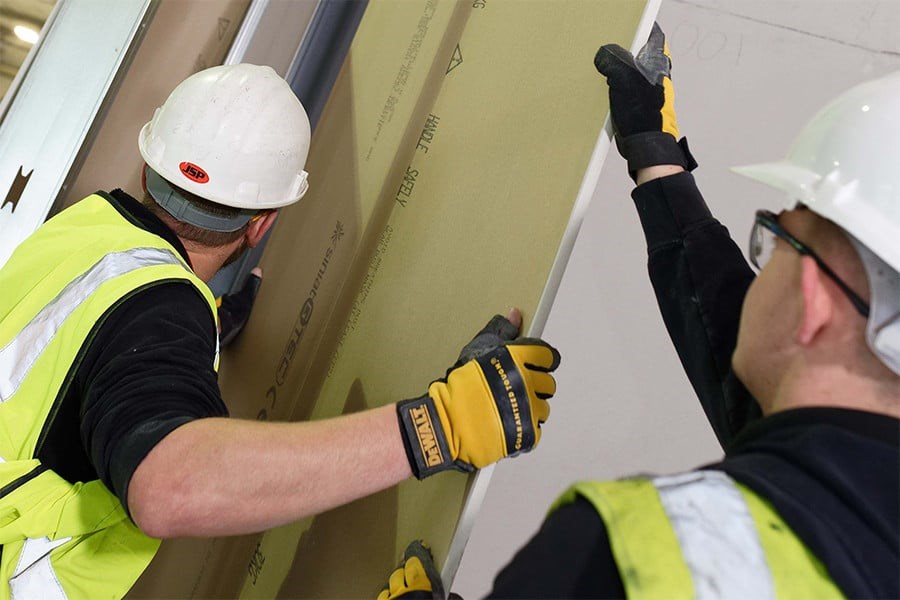Here’s our reminder of how best to handle plasterboard products:
- If possible, all loads should be transported and lifted to a scaffold or work area using lifting equipment such as a telehandler or crane inlift
- Agree in advance the provision of a lifting/loading bay
- Keep work areas clear of clutter and equipment
- If possible, use a trolley to move loads around the scaffold or work area
- Check for any loads over 20kg and make lifting arrangements
- Any loads over 20kg should be positioned using suitable lifting equipment used by trained persons
- Avoid awkward postures or repetitive tasks – or take frequent breaks
- Ensure all operatives have learned safe lifting techniques as it is not just the weight of a load that can cause injury; light loads if not lifted correctly can also cause problems
- Use and maintain PPE correctly
There is a risk of pain or injury from working in awkward positions, performing repetitive tasks, or lifting. Operatives should observe the following to help prevent injury:
- Avoid lifting manually where possible; use a lifting aid or device where practical to do so
- Bend your knees; use the strong leg muscles instead of your back
- Place one foot slightly in front of the other use a good stance for stability
- Keep the load close to your body
- Check the load for stability and look out for sharp edges
- Assess the weight of the load and if satisfied, lift smoothly
- Don’t twist your body – use your feet to change direction
- Look out for tripping hazards prior to lifting or carrying a load, plan your route
- If in doubt, don’t lift get help or speak to your supervisor

